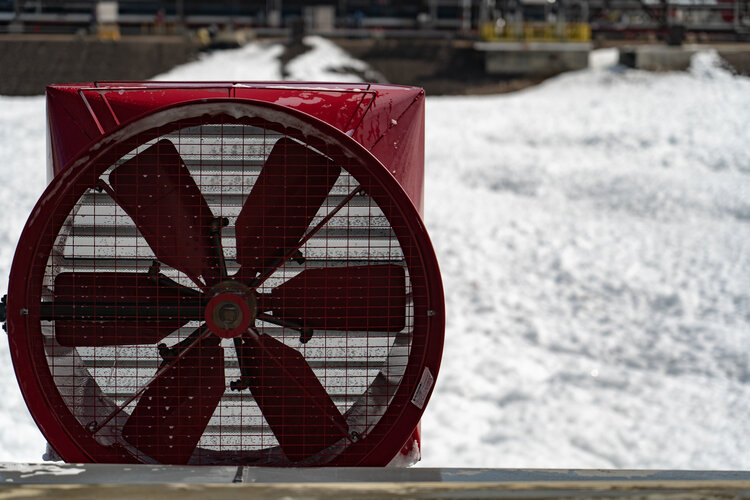Fire is a serious disaster that can strike when you least expect it. For this very reason, engineers have devised multiple types of fire suppression systems to tackle a fire situation. The reason for designing different types of fire suppression system is the fact that no two fires are same. Some fires may be caused by oil spills while some are kitchen fires that are due to oil used for cooking. Water does not work on every fire, in some cases, it may even aggravate the situation. Also, if a fire occurs in a data room, using water will only end up damaging the electrical equipment completely.
If we were to classify fire, there are five major types, Class A (caused by ordinary combustibles such as paper or trash), Class B (caused by liquid or gaseous fuels), Class C (caused by electrical short circuits) Class D (caused by combustible metals) and Class K (kitchen fires). All these different types of fires are extinguished with different extinguishing methods of suppression. However, all suppression systems leave behind a discharge when used. In today’s article, we will discuss what you should so after a suppression system discharge.
Wet Chemical Discharge
Wet chemical fire suppression systems are specially designed to extinguish fires that occur in large restaurant kitchens. These fire suppression systems are installed in the stove hood, and the sensors are designed to emit the wet chemical discharge the moment they detect smoke or fire. Wet chemical fire suppression systems are made of a concoction of potassium carbonate. This chemical has alkalinity that can cause rusting or corrosion on metal equipment so extra care must be taken when cleaning up the wet chemical fire suppression system discharge. The problem is, most of the modern kitchen equipment are made of metals such as steel or aluminum. So in case of a discharge, the cleanup process should start almost immediately as long exposure to the chemicals could spoil the finishing of the equipment.
Before you begin with the cleanup process, do a thorough check to find out if all the sources of fuel in the kitchen premises are shut off, and there is no other open leak. Next, you need to check the stove hood and exhaust and de-energize them to avoid the possibility of electric shock during the cleaning process. Apart from that, do wait for a little before you start the cleaning process so that the area that caught fire has cooled down and will not cause any harm to the person cleaning the discharge. Extra care should be taken when cleaning the agent as it can cause irritation when it comes in contact with the skin. You are advised to wear gloves when cleaning the chemical. If in case your skin comes in contact with the chemical agent, wash thoroughly with water. The chemical can either be cleaned using hot water, soapy water or a simple clean cloth. You just need to ensure that the foam is cleaned completely off the surface. Once all the foam is cleared, you can rinse the affected area with water and leave it to dry before using it again.
Dry Chemical Discharge
A dry chemical fire extinguisher is used to extinguish Class A, B, and C fire. This fire suppression system can be used on all these three types of fire because it is made of siliconized mono-ammonium phosphate powder. Since these fire extinguishers are made of dry chemicals, there is no risk as such to the people cleaning the discharge. However, based on what location is it used, the cleanup process needs to be decided. If the dry chemical fire suppressor is installed in an exterior location, the cleanup will be easy and hassle-free, but if it is used in an indoor location that is at risk of corrosion, the cleanup can be a little tedious.
When cleaning up after a dry chemical discharge, ensure that all pieces of electrical equipment are switched off. Begin the cleaning process by first sweeping off the dry chemical residue that settles on the floor or on the equipment if any. You could also vacuum clean it with the help of a hi-efficiency particulate air filter to hold the minute particles of the chemical. Post sweeping or vacuum cleaning you can wipe of the place with a wet cloth. For places where the silicone dry chemical has settled, mix 50% isopropyl alcohol with 50% water and spray on the area. Leave it for a few minutes and rinse or wipe off with warm water. If you want to neutralize the mono-ammonium phosphate, make a solution of baking soda and water to spray on the area you want to neutralize. Rinse it with warm water after a few minutes. After cleaning out the chemical, wash the area with mild soap and water solution. Dry out the area to remove excess water if any.
Fire suppression systems are designed differently, but at the end of the day, they all serve the same purpose of extinguishing the fire and saving life and property from damage. Ensuring that you use the right type of fire suppression system for your premises based on the most plausible fire hazard is essential. This will make sure that there is least possible damage to your property. So get in touch with our fire suppression system engineers to find the best-suited fire suppression system for your premises.



